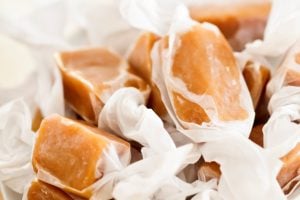What is a needle bath? The basics & the benefits of this vintage shower
By O.D. Brandenburg – Wisconsin State Journal (Madison) October 2, 1921
In a bathroom, far better than the shower is the needle bath, by which water, coming from any one of the side walls of the little bath enclosure, is sprayed horizontally upon the bather, at two points — chest and hip.
The shower, deluging directly from above, impracticable for women with masses of hair to keep dry, but the needle bath embraces all the advantages of the shower with this vital objection eliminated.
Not a drop of water need touch higher than the neck; yet if one wants a shampoo, all she or he need do is merely to bend the head a bit to the level of the upper spray.

In my home, for twenty years there have been tubs, showers and needle baths, and all the family vastly prefer the needle. The shower is rarely used, and no one accustomed to a needle bath will ever again tolerate the tub if he can help it.
No home is modern without the needle bath — no one but an unreasoning old fogy will install a tub in the home he is building. The tub costs more, too, and requires a larger space.
I may add that hot and cold water are instantaneously mixed in a needle bath fixture, and that colder water may be used in the form of a thin spray than in a sousing tub. One scarcely can suffer a chill.

These observations are based on more than twenty years’ personal experience with tub, shower and needle, equally convenient, and are volunteered in friendly spirit for the benefit of my fellowmen.
The shower is a great improvement upon the tub, but the needle bath beats the shower out of sight.
Having a needle bath in the home
Info & images from J. L. Mott Iron Works, New York – 1908
Some of these bathroom systems combine the desirable features of plunge, needle, shower bath and handrail in a practical and attractive form, not only from the standpoint of utility, but appearance.
The arrangement of curtain rod and curtain gives abundant room for the bather within the curtain. The lower section of the needle bath forms the handrail.

A shower or needle bath is most invigorating and healthful in its effects and can be taken in less time than an ordinary plunge bath. The combinations shown [below] represent shower and needle baths arranged in a most practical and convenient form for use in private bathrooms, bathing institutions and athletic clubs.
The small needle tubes, connected to the curved ribs in a very ingenious manner, allows them to be easily uncoupled for cleaning. The ends of the needle tubes also unscrew, permitting the inside to be cleaned without detaching them.
These are important features, especially when the water carries any suspended matter or sediment which may clog the needle perforations.
Note: To obtain proper results with needle baths, the water pressure should be at least 20 pounds, and the supply pipes amply large.
Antique plumbing fixtures (1908)
Features four bars with multiple horizontal sprays, and a traditional showerhead above

A complete and efficient appliance (1908)
The five different forms of baths (needle, shower, descending douche, liver spray and bidet), can be controlled separately or combined, and with any degree of force or temperature within the limits of the supply. The valves may be at the right, as shown, or at the left, or otherwise arranged to suit any particular location.
Special and valuable features of this combination are: First, the swinging bidet, which is controlled by the operator and is entirely out of the way when not in use.
Second, the shower, which is made in two parts that screw together, allowing the entire interior of the shower to be cleaned with facility. Third, the distribution, which is direct and compact, all unnecessary bends and pipes being dispensed with.

Old fashioned needle bath with shower curtain

ALSO SEE: 20 elegant antique bathrooms from the 1900s: Sinks, tubs, tile & decor



















